Understanding the Purpose of a Job Apply Cover Letter
A job apply cover letter is more than just a formality; it is your first opportunity to make a strong impression on a potential employer. It serves as a crucial introduction, providing context to your resume and allowing you to showcase your personality, enthusiasm, and suitability for the role. This document enables you to connect your skills and experience directly to the specific requirements of the job, setting the stage for a successful application. A well-crafted cover letter can significantly increase your chances of getting noticed and securing an interview, which is the ultimate goal of the job application process. Think of it as your personal marketing pitch designed to highlight your unique value proposition.
Why is a Cover Letter Important
In a competitive job market, a cover letter provides the edge you need to stand out from other candidates. It demonstrates your interest and motivation beyond simply listing your qualifications. It shows that you have taken the time to research the company and understand the role, which indicates genuine interest and a proactive approach. A cover letter allows you to provide a narrative that explains your career journey, highlights key achievements, and clarifies any gaps or transitions in your employment history. Moreover, it provides a platform to express your communication skills, as the letter is a direct reflection of your writing abilities and your attention to detail.
Key Elements of a Compelling Cover Letter
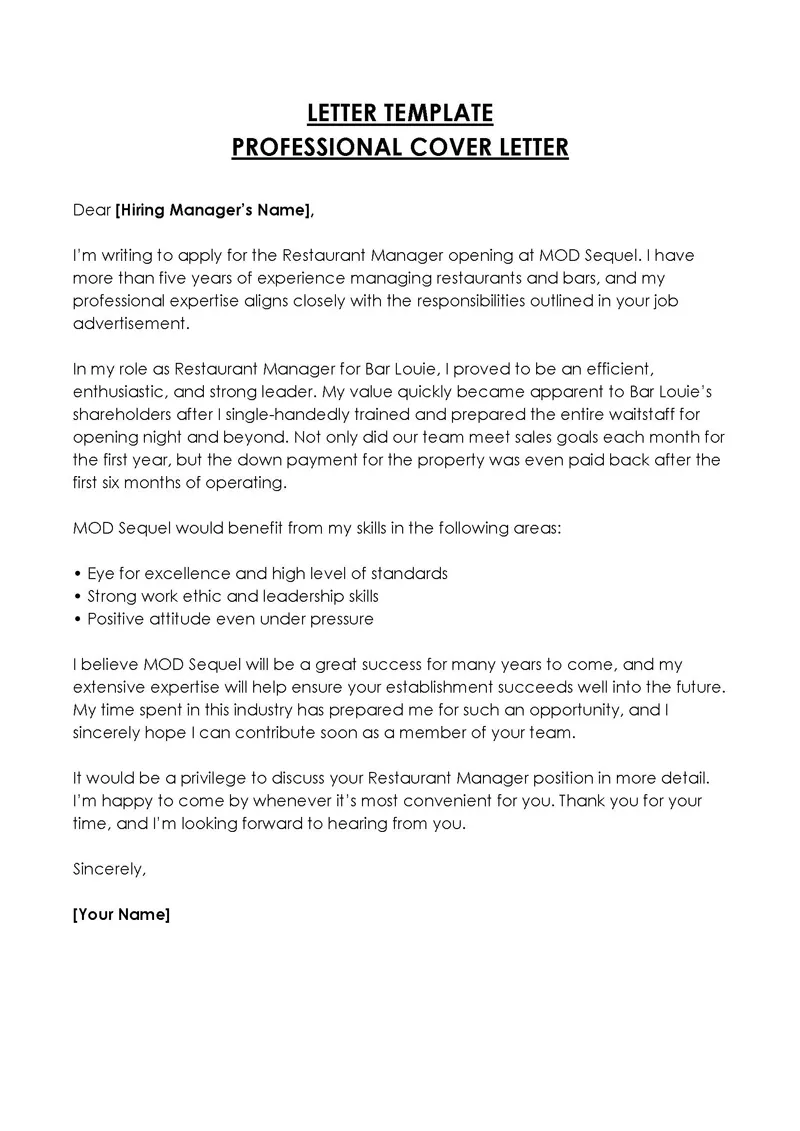
Header and Contact Information
Start your cover letter with a professional header, including your full name, contact number, email address, and your LinkedIn profile URL. Ensure this information is accurate and easily accessible. Following the header, include the date and the hiring manager’s name and title, if known. Addressing the letter to a specific person, rather than using a generic greeting, shows that you have researched the company and are genuinely interested in the role. This initial section sets the tone for the rest of your letter and provides essential contact details for the potential employer.
Personalized Greeting
A personalized greeting is a crucial element in making a positive first impression. Avoid using generic greetings such as “To Whom It May Concern.” If possible, address the hiring manager by name. Research the company’s website or LinkedIn to find the appropriate contact person. Use formal titles (Mr., Ms., Dr., etc.) unless you know the person personally. If you are unable to find a specific name, opt for a professional alternative such as “Dear Hiring Team” or “Dear [Department Name] Hiring Manager.” This personalized touch shows your attention to detail and initiative.
Opening Paragraph Hook the Reader
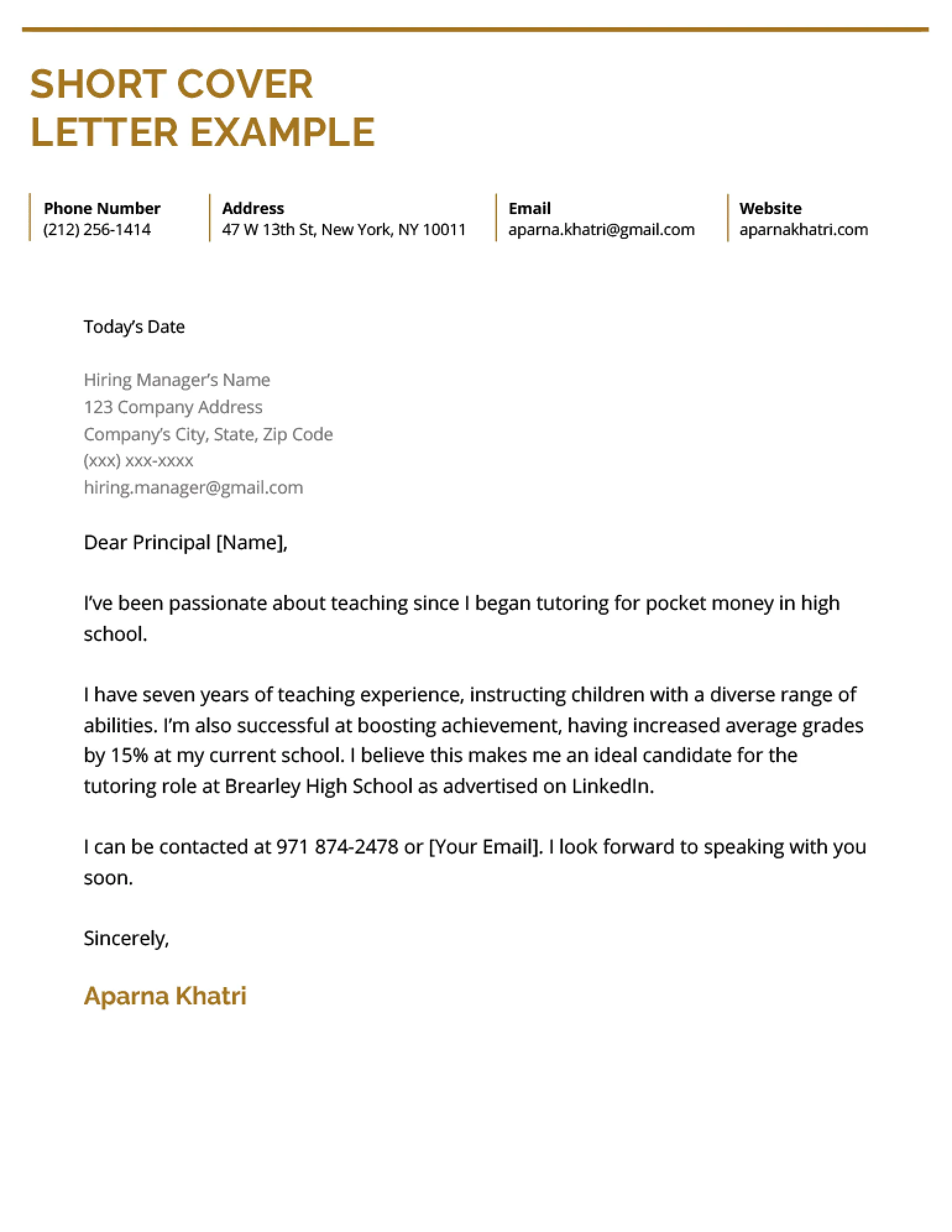
The opening paragraph is your opportunity to immediately capture the reader’s attention. Start with a strong hook that highlights your key qualifications and clearly states the position you are applying for. Briefly explain where you saw the job posting and express your enthusiasm for the role and the company. The opening paragraph should immediately convey your suitability for the role and make the reader want to learn more. Mentioning a specific project, achievement, or skill that aligns with the job requirements can make your opening even more compelling.
Body Paragraphs Showcasing Your Skills
The body paragraphs are the core of your cover letter, where you demonstrate how your skills and experience align with the job requirements. Use these paragraphs to highlight relevant experiences and achievements, providing specific examples of how you have excelled in previous roles. Tailor your responses to match the key responsibilities outlined in the job description, ensuring you address the employer’s needs. Focus on the skills and experiences that are most relevant to the position, and provide concise, compelling narratives that showcase your value to the company. Use strong action verbs to describe your accomplishments and quantify your results whenever possible.
Highlight Relevant Experience and Achievements
In the body paragraphs, provide detailed examples that highlight your relevant experience and achievements. Instead of simply listing your responsibilities, focus on what you accomplished and the impact you made in previous roles. Describe specific projects you worked on, challenges you overcame, and results you achieved. Use the STAR method (Situation, Task, Action, Result) to structure your responses, providing context, outlining the task, describing your actions, and quantifying the results. This approach helps the reader understand your capabilities and how you can contribute to their organization.
Quantify Your Accomplishments
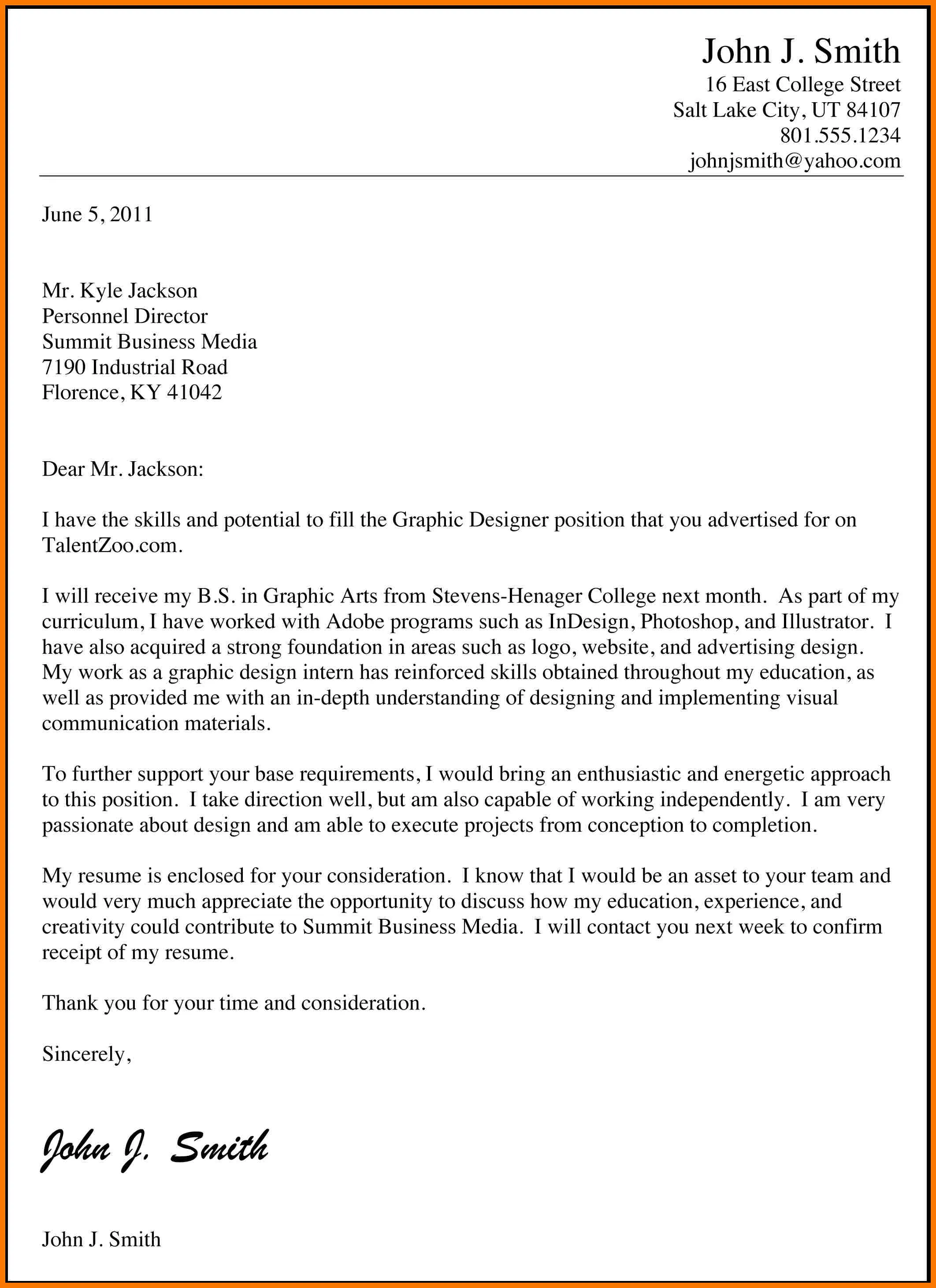
Whenever possible, quantify your accomplishments to demonstrate your impact and effectiveness. Use numbers, percentages, and specific data to illustrate your achievements. For example, instead of saying “Increased sales,” say “Increased sales by 15% in Q4.” This level of detail makes your achievements more tangible and shows that you understand how to measure success. Quantifiable results provide concrete evidence of your abilities and make your cover letter more persuasive. When describing your experience, consider including metrics such as budget management, customer satisfaction ratings, or project completion timelines.
Closing Paragraph Call to Action
The closing paragraph should summarize your interest in the position and the company, reiterating why you are a good fit. Express your enthusiasm for the opportunity and provide a clear call to action. Indicate your availability for an interview and express your willingness to discuss your qualifications further. Thank the hiring manager for their time and consideration. A strong closing paragraph leaves a lasting positive impression and encourages the reader to take the next step in the hiring process.
Professional Closing and Signature
End your cover letter with a professional closing such as “Sincerely,” “Best regards,” or “Thank you.” Include your typed name below the closing and, if you are submitting a hard copy, sign your name above your typed name. Ensure your signature is legible and professional. Maintain a consistent and professional tone throughout the entire letter, avoiding slang or overly casual language. The closing and signature are the final touches that signal the completion of your application and leave a lasting impression on the hiring manager.
Formatting and Design Tips
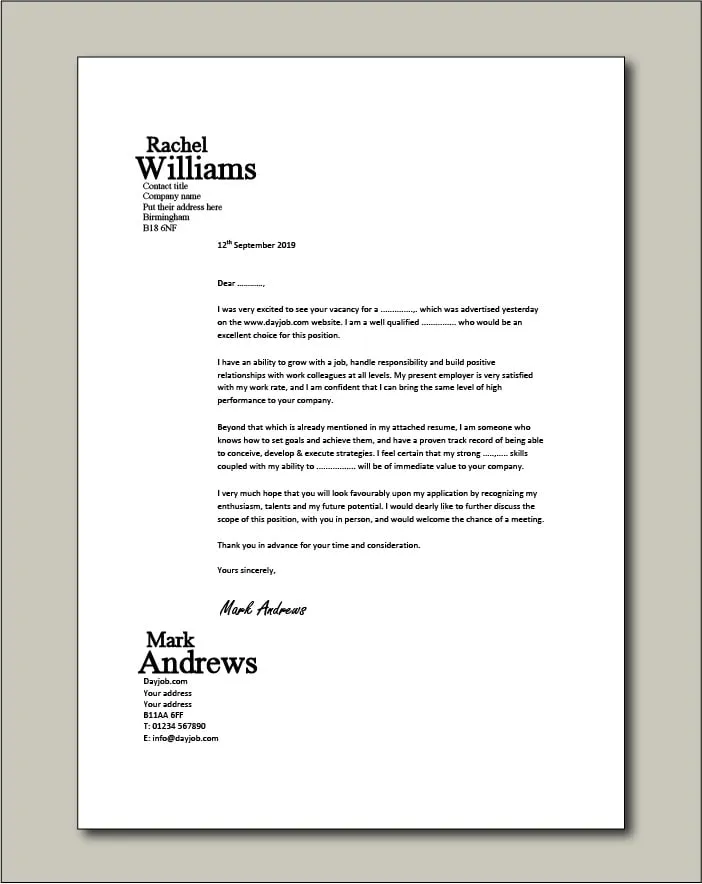
Font Choice and Readability
Choose a professional and readable font for your cover letter. Common fonts such as Times New Roman, Arial, Calibri, or Helvetica are generally recommended. Ensure the font size is between 10 and 12 points for readability. Avoid using overly decorative fonts that could distract the reader. Maintain consistent formatting throughout your letter, including font style, size, and spacing. Clear, uncluttered formatting is essential for making your cover letter easy to read and understand. Good formatting enhances the professional appearance of your letter and shows your attention to detail.
Length and Structure
Keep your cover letter concise and focused, ideally no longer than one page. Structure your letter with clear paragraphs, headings, and bullet points to make it easy to scan and read. Use a professional layout with standard margins (1 inch on all sides) and consistent spacing. Ensure that your content flows logically, from your opening hook to your closing call to action. Avoid lengthy paragraphs; break up text into smaller, more manageable chunks. This careful organization makes your letter visually appealing and improves its readability.
Proofreading and Editing Your Cover Letter
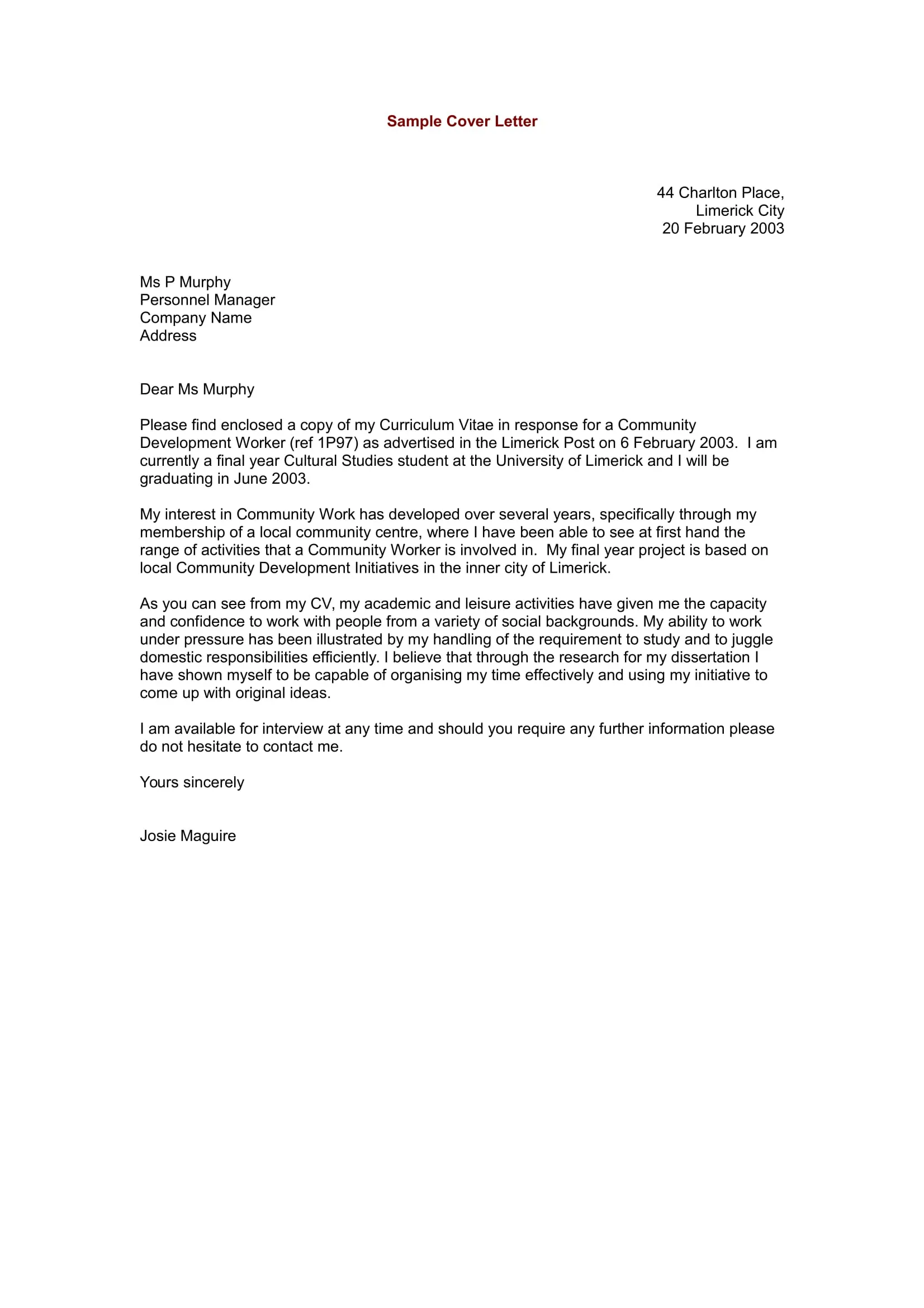
Before submitting your cover letter, proofread it carefully for any errors in grammar, spelling, and punctuation. Misspelled words and grammatical errors can create a negative impression and undermine your credibility. Use spell-check and grammar-check tools, but also read through the letter yourself to catch any errors the tools may miss. Ask a friend or family member to review your letter for a fresh perspective. Ensure that your letter is clear, concise, and error-free to present yourself in the best possible light.
Common Mistakes to Avoid
Generic Cover Letters
Avoid sending a generic cover letter that is not tailored to the specific job and company. Generic letters show a lack of interest and can be easily dismissed. Always customize your cover letter to match the requirements of the role and the values of the company. Research the company, understand the job description, and highlight how your skills and experience align with their needs. Personalize your letter by addressing the hiring manager by name and referring to specific details about the company and the position.
Typos and Grammatical Errors
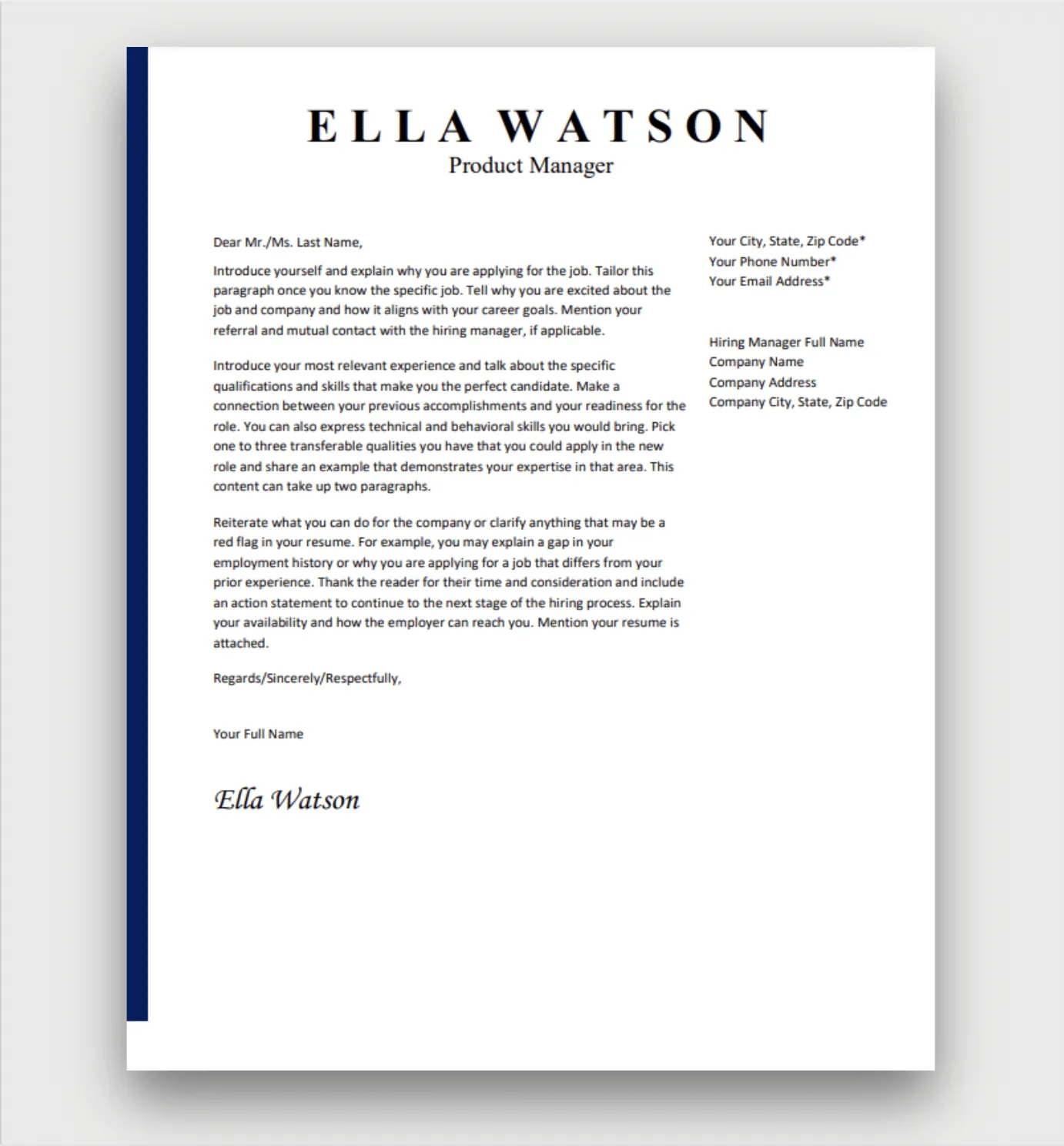
Typos and grammatical errors are a major turn-off for hiring managers. They demonstrate a lack of attention to detail and can damage your credibility. Proofread your cover letter thoroughly and use grammar-checking tools to catch any mistakes. Ensure that your sentences are clear and well-structured. Always have a second pair of eyes review your letter before submitting it. A well-written, error-free cover letter reflects your professionalism and your commitment to quality.
Focusing on What You Want, Not What You Can Offer
Avoid making your cover letter all about what you want from the job. Instead, focus on what you can offer the company and how you can contribute to their success. Highlight your skills, experience, and accomplishments, and explain how they align with the job requirements and the company’s objectives. Show the hiring manager why you are the ideal candidate and how you can add value to their team. Emphasize the benefits of hiring you, not just your personal goals.
Tailoring Your Cover Letter
Tailoring your cover letter is crucial for making a strong impression. Customize each letter to match the specific job description and the company’s values. Research the company’s mission, culture, and recent projects to show your genuine interest. Address the hiring manager by name and refer to specific details about the role and the organization. Highlight the skills and experiences that are most relevant to the position, and demonstrate how your qualifications align with their needs. The more personalized your cover letter, the more likely you are to capture the hiring manager’s attention and secure an interview. A tailored cover letter shows that you are a serious candidate who has taken the time to understand the role and the company.
